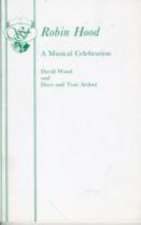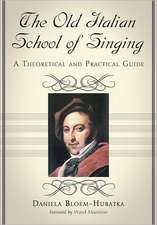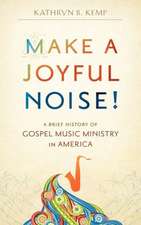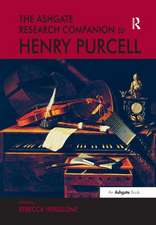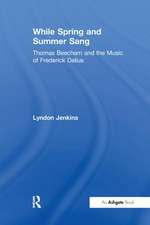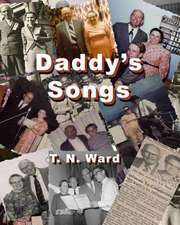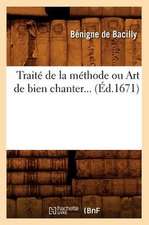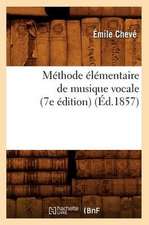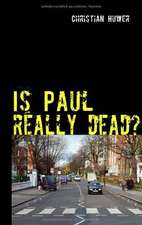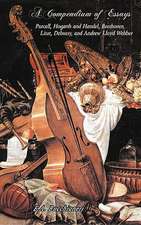The Indian Drum of the King-God and the Pakhāvaj of Nathdwara: SOAS Studies in Music
Autor Paolo Pacciollaen Limba Engleză Paperback – 13 dec 2021
| Toate formatele și edițiile | Preț | Express |
|---|---|---|
| Paperback (1) | 398.86 lei 43-57 zile | |
| Taylor & Francis – 13 dec 2021 | 398.86 lei 43-57 zile | |
| Hardback (1) | 1000.27 lei 43-57 zile | |
| Taylor & Francis – 20 mai 2020 | 1000.27 lei 43-57 zile |
Din seria SOAS Studies in Music
-
 Preț: 341.08 lei
Preț: 341.08 lei - 9%
 Preț: 868.79 lei
Preț: 868.79 lei - 9%
 Preț: 936.95 lei
Preț: 936.95 lei -
 Preț: 311.18 lei
Preț: 311.18 lei -
 Preț: 310.03 lei
Preț: 310.03 lei - 9%
 Preț: 866.79 lei
Preț: 866.79 lei -
 Preț: 310.75 lei
Preț: 310.75 lei -
 Preț: 311.41 lei
Preț: 311.41 lei -
 Preț: 341.55 lei
Preț: 341.55 lei -
 Preț: 297.49 lei
Preț: 297.49 lei -
 Preț: 377.82 lei
Preț: 377.82 lei - 25%
 Preț: 768.69 lei
Preț: 768.69 lei - 18%
 Preț: 1121.01 lei
Preț: 1121.01 lei - 18%
 Preț: 1063.31 lei
Preț: 1063.31 lei - 25%
 Preț: 766.66 lei
Preț: 766.66 lei - 26%
 Preț: 765.43 lei
Preț: 765.43 lei - 18%
 Preț: 1060.25 lei
Preț: 1060.25 lei - 18%
 Preț: 1058.19 lei
Preț: 1058.19 lei - 18%
 Preț: 1063.41 lei
Preț: 1063.41 lei - 18%
 Preț: 1063.41 lei
Preț: 1063.41 lei - 28%
 Preț: 826.84 lei
Preț: 826.84 lei - 25%
 Preț: 823.17 lei
Preț: 823.17 lei - 18%
 Preț: 1053.16 lei
Preț: 1053.16 lei - 15%
 Preț: 239.96 lei
Preț: 239.96 lei - 18%
 Preț: 1050.09 lei
Preț: 1050.09 lei -
 Preț: 375.50 lei
Preț: 375.50 lei - 26%
 Preț: 766.24 lei
Preț: 766.24 lei - 26%
 Preț: 822.34 lei
Preț: 822.34 lei - 18%
 Preț: 1061.06 lei
Preț: 1061.06 lei - 26%
 Preț: 765.43 lei
Preț: 765.43 lei - 26%
 Preț: 765.43 lei
Preț: 765.43 lei - 25%
 Preț: 769.10 lei
Preț: 769.10 lei - 18%
 Preț: 1061.93 lei
Preț: 1061.93 lei - 30%
 Preț: 768.69 lei
Preț: 768.69 lei - 18%
 Preț: 1059.45 lei
Preț: 1059.45 lei - 26%
 Preț: 734.25 lei
Preț: 734.25 lei - 18%
 Preț: 1108.37 lei
Preț: 1108.37 lei - 9%
 Preț: 1006.57 lei
Preț: 1006.57 lei - 18%
 Preț: 1051.55 lei
Preț: 1051.55 lei - 25%
 Preț: 767.88 lei
Preț: 767.88 lei - 25%
 Preț: 825.21 lei
Preț: 825.21 lei - 18%
 Preț: 1008.97 lei
Preț: 1008.97 lei - 26%
 Preț: 765.01 lei
Preț: 765.01 lei - 26%
 Preț: 764.36 lei
Preț: 764.36 lei - 18%
 Preț: 1005.04 lei
Preț: 1005.04 lei - 31%
 Preț: 765.04 lei
Preț: 765.04 lei - 18%
 Preț: 1068.15 lei
Preț: 1068.15 lei - 31%
 Preț: 763.93 lei
Preț: 763.93 lei
Preț: 398.86 lei
Nou
Puncte Express: 598
Preț estimativ în valută:
76.32€ • 79.89$ • 63.52£
76.32€ • 79.89$ • 63.52£
Carte tipărită la comandă
Livrare economică 31 martie-14 aprilie
Preluare comenzi: 021 569.72.76
Specificații
ISBN-13: 9781032236094
ISBN-10: 1032236094
Pagini: 206
Ilustrații: 28 Illustrations, black and white
Dimensiuni: 156 x 234 x 11 mm
Greutate: 0.67 kg
Ediția:1
Editura: Taylor & Francis
Colecția Routledge
Seria SOAS Studies in Music
Locul publicării:Oxford, United Kingdom
ISBN-10: 1032236094
Pagini: 206
Ilustrații: 28 Illustrations, black and white
Dimensiuni: 156 x 234 x 11 mm
Greutate: 0.67 kg
Ediția:1
Editura: Taylor & Francis
Colecția Routledge
Seria SOAS Studies in Music
Locul publicării:Oxford, United Kingdom
Public țintă
PostgraduateNotă biografică
Paolo Pacciolla is Tagore Fellow affiliated with the Indira Gandhi National Centre for the Arts of New Delhi, where he is conducting research on ritual drumming in Kerala. His main ethnographic focus is on music in India, and his research interests include Ethnomusicology, Organology, Iconography of Music, Indology and Religious Studies.
Cuprins
Chapter One. Introduction
1.1 Background
1.2 Fieldwork among pakhavajis
1.3 Ancient courts: the roots of a musical tradition
1.4 Nathdwara, a contemporary reign of the King-God and his court
1.5 A multidimensional approach
Chapter Two. A drum between courts and temples
2.1 Music, religions, the sacred and the secular in India
2.2 Paramparas and gharanas according to contemporary pakhavaj players
Chapter Three. The pakhavaj in contemporary India and its religious and mythological heritage according to pakhavaj players
3.1 The pakhavaj
3.2 The pakhavaj and the pakhavaj players in the classical music scene of contemporary India
3.3 The pakhavaj heritage according to its players
Chapter Four. Auspicious Drumming
4.1 Auspiciousness
4.2 Auspiciousness and its roots
4.3 The auspicious arts in literature and other textual sources
4.4 Rain on the lotus pond
4.5 Gaja-Lak¿mi
4.6 The cloud-drum
4.7 Rain of blessings
Chapter Five. The drum of the King-God: from m¿da¿ga to pakhavaj
5.1 The socio-historical context of the emergence of the m¿da¿ga as major courtly drum
5.2 The sound of the m¿da¿ga in the aestheticised life of the courts
5.3 Siva, the magnification of the warrior king
5.4 The drum giving voice to death
5.5 Vi¿¿u- K¿¿¿a, the righteous king and the bhakti cults
Chapter Six. From m¿da¿ga to pakhavaj
6.1 The multiplication of m¿da¿gas and the emergence of the pakhavaj
6.2 From m¿da¿ga to pakhavaj and vice versa: making the desi marga and the marga desi
Chapter Seven. The Nathdwara gharana: playing the pakhavaj for Nathji
7.1 Vallabhacarya and the Pu¿¿imarg
7.2 Sri Nathji, the King-God, and his worship
7.3 The role of music and aesthetics in the cult of Pu¿¿imarg
7.4 The family of Purushottam Das
7.5 Pandit Dalchand Sharma and my research
Chapter Eight. The repertoire
8.1 The pakhavaj: facets of its language and playing styles
8.2 Compositional types
8.3 Parans as structures based on geometrical figures
8.4 Parans as prayers
8.5 Parans, images and poetry
8.6 A knowledgeable king of the 20th century and his parans
8.7 The torrent and the rain
Chapter Nine. The solo pakhavaj recital
9.1 The structure of the solo recital
9.2 Lotuses, garlands of flowers and the solo pakhavaj
9.3 The solo recital of the Nathdwara gharana
9.4 Stuti paran
9.5 Madhya lay ka prastar
9.6 Dhenanaka baj
9.7 Paran
9.8 Lay tal torneka kata
9.9 Chandkari
9.10 Thapiya ka baj
9.11 Rela
Conclusion
Glossary
Bibliography
Solo Pakhavaj Recordings
1.1 Background
1.2 Fieldwork among pakhavajis
1.3 Ancient courts: the roots of a musical tradition
1.4 Nathdwara, a contemporary reign of the King-God and his court
1.5 A multidimensional approach
Chapter Two. A drum between courts and temples
2.1 Music, religions, the sacred and the secular in India
2.2 Paramparas and gharanas according to contemporary pakhavaj players
Chapter Three. The pakhavaj in contemporary India and its religious and mythological heritage according to pakhavaj players
3.1 The pakhavaj
3.2 The pakhavaj and the pakhavaj players in the classical music scene of contemporary India
3.3 The pakhavaj heritage according to its players
Chapter Four. Auspicious Drumming
4.1 Auspiciousness
4.2 Auspiciousness and its roots
4.3 The auspicious arts in literature and other textual sources
4.4 Rain on the lotus pond
4.5 Gaja-Lak¿mi
4.6 The cloud-drum
4.7 Rain of blessings
Chapter Five. The drum of the King-God: from m¿da¿ga to pakhavaj
5.1 The socio-historical context of the emergence of the m¿da¿ga as major courtly drum
5.2 The sound of the m¿da¿ga in the aestheticised life of the courts
5.3 Siva, the magnification of the warrior king
5.4 The drum giving voice to death
5.5 Vi¿¿u- K¿¿¿a, the righteous king and the bhakti cults
Chapter Six. From m¿da¿ga to pakhavaj
6.1 The multiplication of m¿da¿gas and the emergence of the pakhavaj
6.2 From m¿da¿ga to pakhavaj and vice versa: making the desi marga and the marga desi
Chapter Seven. The Nathdwara gharana: playing the pakhavaj for Nathji
7.1 Vallabhacarya and the Pu¿¿imarg
7.2 Sri Nathji, the King-God, and his worship
7.3 The role of music and aesthetics in the cult of Pu¿¿imarg
7.4 The family of Purushottam Das
7.5 Pandit Dalchand Sharma and my research
Chapter Eight. The repertoire
8.1 The pakhavaj: facets of its language and playing styles
8.2 Compositional types
8.3 Parans as structures based on geometrical figures
8.4 Parans as prayers
8.5 Parans, images and poetry
8.6 A knowledgeable king of the 20th century and his parans
8.7 The torrent and the rain
Chapter Nine. The solo pakhavaj recital
9.1 The structure of the solo recital
9.2 Lotuses, garlands of flowers and the solo pakhavaj
9.3 The solo recital of the Nathdwara gharana
9.4 Stuti paran
9.5 Madhya lay ka prastar
9.6 Dhenanaka baj
9.7 Paran
9.8 Lay tal torneka kata
9.9 Chandkari
9.10 Thapiya ka baj
9.11 Rela
Conclusion
Glossary
Bibliography
Solo Pakhavaj Recordings
Descriere
The book studies the evolution of the ancient drum m¿da¿ga into the pakhavaj crossing more than two thousand years of history.

